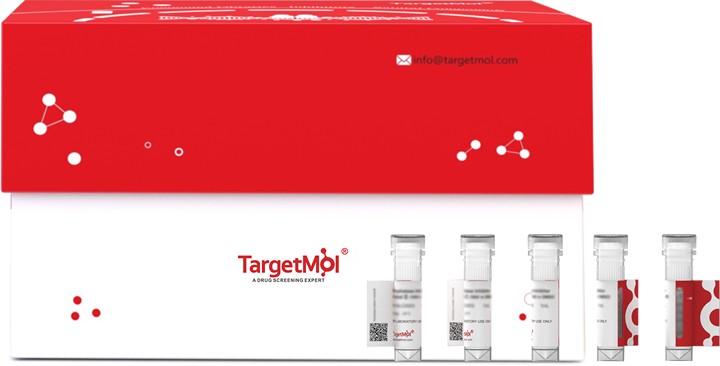- Remove All
 Your shopping cart is currently empty
Your shopping cart is currently empty
Citrate Synthase Protein, Human, Recombinant (His)
Chondroitin sulphate (CS) glycosaminoglycan chains on cell and extracellular matrix proteoglycans (PGs) can no longer be regarded as merely hydrodynamic space fillers. Overwhelming evidence over recent years indicates that sulphation motif sequences within the CS chain structure are a source of significant biological information to cells and their surrounding environment. CS sulphation motifs have been shown to interact with a wide variety of bioactive molecules, e.g. cytokines, growth factors, chemokines, morphogenetic proteins, enzymes and enzyme inhibitors, as well as structural components within the extracellular milieu. They are therefore capable of modulating a panoply of signalling pathways, thus controlling diverse cellular behaviours including proliferation, differentiation, migration and matrix synthesis. Chondroitin sulfate (CS) is a sulfated glycosaminoglycan composed of a long chain of repeating disaccharide units that are attached to core proteins, resulting in CS proteoglycans (CSPGs). In the mature brain, CS is concentrated in perineuronal nets (PNNs), which are extracellular structures that surround synapses and regulate synaptic plasticity. In addition, CS is rapidly synthesized after CNS injury to create a physical and chemical barrier that inhibits axon growth.

Citrate Synthase Protein, Human, Recombinant (His)
| Pack Size | Price | Availability | Quantity |
|---|---|---|---|
| 100 μg | $812 | 7-10 days |
Product Information
| Biological Activity | Activity testing is in progress. It is theoretically active, but we cannot guarantee it. If you require protein activity, we recommend choosing the eukaryotic expression version first. |
| Description | Chondroitin sulphate (CS) glycosaminoglycan chains on cell and extracellular matrix proteoglycans (PGs) can no longer be regarded as merely hydrodynamic space fillers. Overwhelming evidence over recent years indicates that sulphation motif sequences within the CS chain structure are a source of significant biological information to cells and their surrounding environment. CS sulphation motifs have been shown to interact with a wide variety of bioactive molecules, e.g. cytokines, growth factors, chemokines, morphogenetic proteins, enzymes and enzyme inhibitors, as well as structural components within the extracellular milieu. They are therefore capable of modulating a panoply of signalling pathways, thus controlling diverse cellular behaviours including proliferation, differentiation, migration and matrix synthesis. Chondroitin sulfate (CS) is a sulfated glycosaminoglycan composed of a long chain of repeating disaccharide units that are attached to core proteins, resulting in CS proteoglycans (CSPGs). In the mature brain, CS is concentrated in perineuronal nets (PNNs), which are extracellular structures that surround synapses and regulate synaptic plasticity. In addition, CS is rapidly synthesized after CNS injury to create a physical and chemical barrier that inhibits axon growth. |
| Species | Human |
| Expression System | Baculovirus Insect Cells |
| Tag | C-His |
| Accession Number | O75390 |
| Synonyms | citrate synthase |
| Construction | A DNA sequence encoding the human CS (O75390) (Met1-Gly466) was expressed with a C-terminal polyhistidine tag. Predicted N terminal: Ala 28 |
| Protein Purity | > 90 % as determined by SDS-PAGE |
| Molecular Weight | 50.4 kDa (predicted); 46 kDa (reducing conditions) |
| Endotoxin | < 1.0 EU/μg of the protein as determined by the LAL method. |
| Formulation | Lyophilized from a solution filtered through a 0.22 μm filter, containing 20 mM Tris, 500 mM NaCl, 10% glycerol, pH 7.0.Typically, a mixture containing 5% to 8% trehalose, mannitol, and 0.01% Tween 80 is incorporated as a protective agent before lyophilization. |
| Reconstitution | A Certificate of Analysis (CoA) containing reconstitution instructions is included with the products. Please refer to the CoA for detailed information. |
| Stability & Storage | It is recommended to store recombinant proteins at -20°C to -80°C for future use. Lyophilized powders can be stably stored for over 12 months, while liquid products can be stored for 6-12 months at -80°C. For reconstituted protein solutions, the solution can be stored at -20°C to -80°C for at least 3 months. Please avoid multiple freeze-thaw cycles and store products in aliquots. |
| Shipping | In general, Lyophilized powders are shipping with blue ice. |
| Research Background | Chondroitin sulphate (CS) glycosaminoglycan chains on cell and extracellular matrix proteoglycans (PGs) can no longer be regarded as merely hydrodynamic space fillers. Overwhelming evidence over recent years indicates that sulphation motif sequences within the CS chain structure are a source of significant biological information to cells and their surrounding environment. CS sulphation motifs have been shown to interact with a wide variety of bioactive molecules, e.g. cytokines, growth factors, chemokines, morphogenetic proteins, enzymes and enzyme inhibitors, as well as structural components within the extracellular milieu. They are therefore capable of modulating a panoply of signalling pathways, thus controlling diverse cellular behaviours including proliferation, differentiation, migration and matrix synthesis. Chondroitin sulfate (CS) is a sulfated glycosaminoglycan composed of a long chain of repeating disaccharide units that are attached to core proteins, resulting in CS proteoglycans (CSPGs). In the mature brain, CS is concentrated in perineuronal nets (PNNs), which are extracellular structures that surround synapses and regulate synaptic plasticity. In addition, CS is rapidly synthesized after CNS injury to create a physical and chemical barrier that inhibits axon growth. |
Dose Conversion
Sci Citations
Calculator
Tech Support

Copyright © 2015-2025 TargetMol Chemicals Inc. All Rights Reserved.


